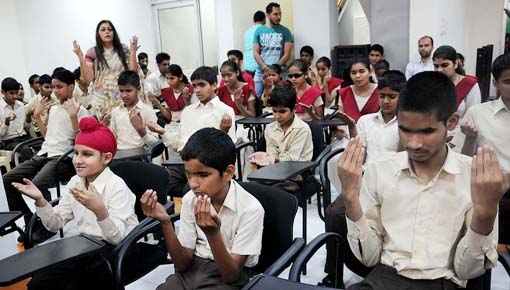Challenges for differently abled students when classes resume

By Mrs. Deepika Goyal, Founder and Director, Popcorn Furniture
The coronavirus pandemic and the subsequent nationwide lockdown has created an unprecedented situation. It is hard to gauge its full impact on children and young people’s mental health and wellbeing. One thing is clear – schools will reopen and seeing the trend in other countries affected by the virus they will probably reopen soon. You cannot open a society fully without reopening schools.
The impact of school closure due to the Covid-19 pandemic is bound to be even greater for those with special needs. Their learning will have been impacted the most. There will be particular issues with managing transitions back to school and especially where there is a change of setting. Children learn best when they are at school.
Students with disabilities may have a difficult time transitioning back to school after missing out on instruction time as well as school-based services such as occupational, physical as well as speech-language therapy and mental health support counselling.
Of course, the disabilities that children experience vary greatly from mild learning disabilities to significant intellectual disabilities with severe behavioural and language challenges. This abrupt transition to home and back to school may make students experience an increase in behavioural outbursts and disengagement from academic work.
Return to school for special kids, therefore, needs special preparation to ease the transition:
The transition back to school will need to be planned and implemented slowly. As much as families and teachers want their children to return to schools, they need to be mindful not to make an abrupt transition
The school will need to individually review the needs of each child before they return to school. This could be done with an online assessment and a review from parents.
The majority of children will have become used to being with their parents and immediate family for an extended period. Changing this can be a potential source of anxiety. There will be children who struggle with this separation and experience anxiety. A staggered opening is a good option.
Children with significant disabilities may show a regression of skills in a very short time, so this extended period without a consistent educational experience may make it difficult for them to regain lost skills once they have returned to school. But with thoughtful planning and implementation of a curriculum designed for children with disabilities, they will continue to grow and develop.
Focussing on rebuilding relationships and establishing routines before restarting the learning process is essential for differently-abled students. Learning will have to wait for a while. We would have to balance the need to continue the curriculum with the more important need to re-build relationships and then make a new start
Another dilemma schools will face is that many students will have trouble adjusting to wearing masks and maintaining physical distancing.
Students on the autism spectrum or those with intellectual disabilities who do not understand the situation and also need help in moving around will need helpers and it will be impossible to practise social distancing with them.
The hearing-impaired students need to be able to lipread. Even masks that have a transparent covering around the mouth don’t allow children sitting six feet away to see clearly. Eye contact is extremely important to keep these students from being distracted and it becomes difficult with the mask.
The smoothest way to do an easy back to school transition for differently-abled kids will be to focus on relationships first. Fear and anxiety about the pandemic, coupled with uncertainty about the future, can be disruptive to a student’s ability to come to school ready to learn. Teachers can act as a powerful buffer against the adverse effects of trauma by helping to establish a safe and supportive environment for learning.


